Mexico Travel: Kayaking and Camping in Baja’s Loreto Bay
Jacques Cousteau called Mexico's Sea of Cortez “the world’s aquarium.” To travel writer Tim Neville, that sounds about right.
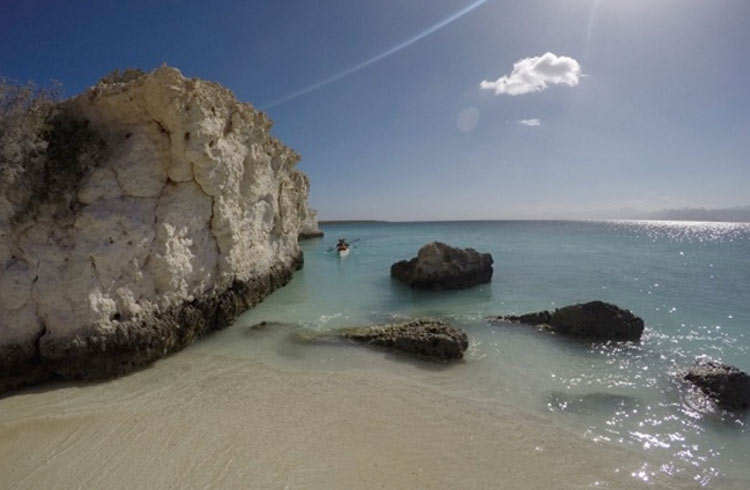 Photo © Tim Neville
Photo © Tim Neville
We haven’t been paddling for long when a large creature appears in the water under my kayak. It’s an odd, primordial moment to see something big and alive finning below my soft and fleshy bits. How exciting, I think. Please don’t eat me.
At first, it’s just a hunch, then a long, slender bill waves through the water like a fencer feeling out a sword. The body glides by, slender and sleek and designed for speed. Seven feet of fish. It rolls to the left, and sunlight fires off its sides in electric bolts.
“A marlin!” I stammer. A blue marlin. I can’t imagine what would have happened had it been a whale.
Close encounters like this with charismatic fauna were the reason I’d come to Mexico’s Loreto Bay National Marine Park. The 800 mi2 (2,072 km2) reserve off the coast of southern Baja in the Sea of Cortez was first established in 1996, and is now part of a 244-island UNESCO World Heritage Site. More than 800 species of aquatic critters call these waters home, including blue whales – the world’s largest animal – that migrate into the bay every spring. Dolphins, manta rays, humpbacks, and fin whales cruise the channels, too, while frigate birds patrol the skies like feathery drones. Jacques Cousteau called this place the world’s aquarium, and if you go by the number of sea turtles I’ve already seen, there is no doubt he was right.
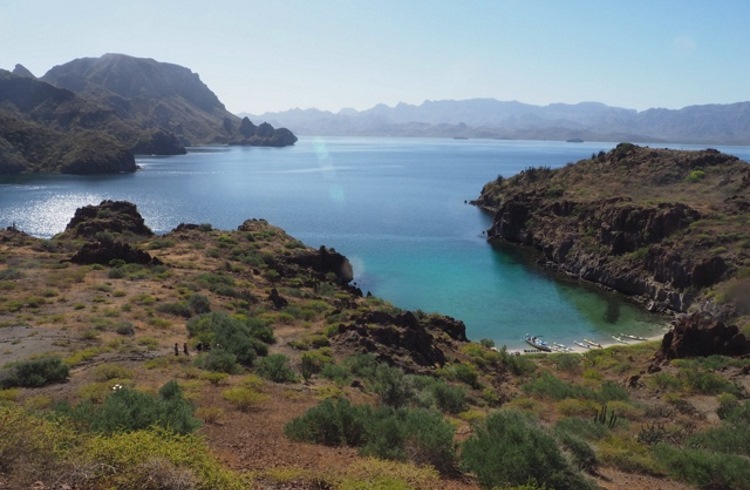
Any trip here is special, but kayakers have it particularly good. Loreto must count among Mexico’s most charming seaside towns, a laidback community of about 18,000 people (not counting the US and Canadian snowbirds) with leafy boulevards, a sparkling waterfront, and one of the oldest Jesuit missions in the country. It’s also the jumping off point for five uninhabited islands that rise just off shore within easy paddling distance. Exploring by kayak makes it easy to draw close to rocky shores and probe for secluded coves. There are white sand beaches to laze on, and trails that weave around towering cacti to reach sweeping ridges with spectacular views. Then night falls – time to build a campfire on the beach, sleep in the light of the moon, and think that life is pretty great.
Dirtbag exclusivity on the Sea of Cortez
A few days earlier, three friends and I land at La Paz on the southern end of Baja and pile into a van for a bumpy five-hour drive north to Loreto. It’s December, the temperature cool but comfortable, and a strong wind whips the bay into a stiff meringue. Conditions like those can make paddling tough for inexperienced boaters like us, but by mid-morning things have settled down enough for us to give it a go.
One of our guides, Axel Herrara Hernández, a marine biologist with a scruffy goatee and love for dolphin songs, slides into the cockpit of his boat and leads us into the bay. Another guide, Luli Noriega, brings up the rear while a safety boat motors behind us, out of ear shot with tables, chairs, and a fully stocked kitchen. The plan is to spend two nights camping on the islands. Other than that, our itinerary is open. I fall in behind Axel and let the kayak lurch with each paddle stroke.
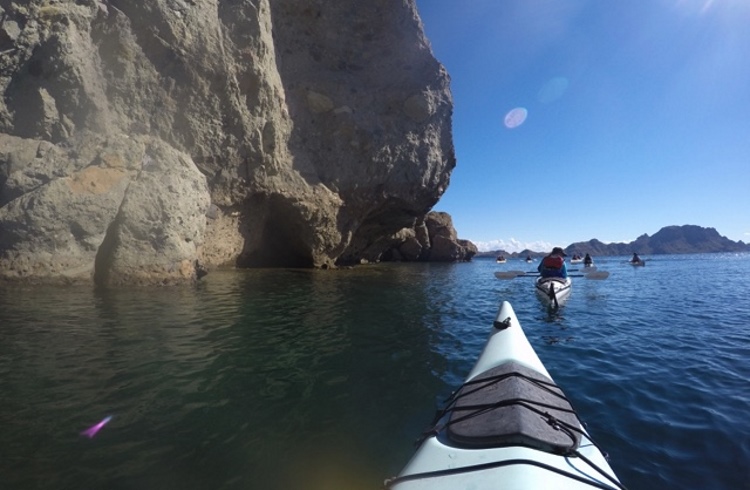
“Magnifico!” booms my friend Javi González, a writer from Spain, as a turtle rears its knobby head between our boats. Annie Young, a friend from Panama, pulls up to see it, while Michael Cooke, a salesman from Oregon, hollers he’s seen a seal. Luli hoots when a manta ray swims by, flapping its wings like a prehistoric bird.
I hadn’t been to Mexico in years, and now I am kicking myself for it. There had been the all-inclusive trip to Cancún with my parents when I was 14, my first trip abroad. In college, my ’74 Ford pickup broke down on a very short-lived trip through northern Baja, and I literally had to push it back into the United States. The last trip was to Akumal, in 2008, when my wife and I scuba dived in a cave filled with water so clear it looked like air – a cenote. as they say. This trip to Loreto has a dirtbag exclusivity about it, like our salt-stained selves have been allowed behind the velvet rope into a party for nature’s beauty queens.
Connected on Isla del Carmen
Early afternoon rolls around and we set up camp on Isla del Carmen, an uninhabited island about six miles off shore. The Sierra Giganta mountains tower to the west in purple lumps. Axel reminds us to beware of scorpions wandering into our sleeping bags. “You don’t want a surprise like that!” he says.
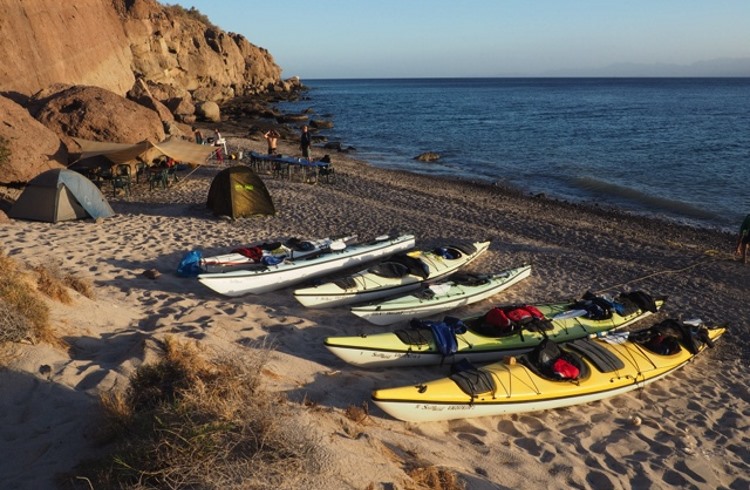
We hike along the island’s shore, then stay up late playing word games around a modest campfire. We put a dent in the beer and let the conversation turn personal. Luli, who is in her early thirties, tells us about how she barely survived a cancer that left her hollow and desperate. Trips like these heal the scars that no one sees.
The rest of the trip seems to blow by in a blur. We stay put on Isla del Carmen for another night and snorkel with jacks and sea horses. I nap in the warm sand and marvel at the loneliness of it all while feeling as connected as ever.
On the final morning, we point the boats west and head for home. An hour into the crossing, the marlin swims under my boat. We snorkel until we are pickled in a hidden cove on Isla Danzante, three miles away, and hike to an overlook called Coyote Point. There, I sit on a rock and watch a pair of kayakers coming our way, their trip just beginning. Lucky them, I think. I hope they don’t get eaten.
Trip Notes
Getting There
Alaska Airlines, American Airlines, Volaris and WestJet all have direct flights into Loreto, however it likely will be cheaper to fly into La Paz or Cabo San Lucas. From there, rent a car or catch a bus north to Loreto, about five hours from La Paz and nine hours from Cabo.
Best Time to Go
Whales arrive early in the year and stay into April. Summers are hot. Winters are pleasant, potentially cool, and sometimes windy (but still probably much better than the weather where you’re at).
Guides
Several local companies offer overnight trips on the islands. Some US-based companies offer packaged sea kayaking tours that include transfers, hotels, and meals as well as guides and equipment. All are easily searchable online.
Related articles
Simple and flexible travel insurance
You can buy at home or while traveling, and claim online from anywhere in the world. With 150+ adventure activities covered and 24/7 emergency assistance.
Get a quote
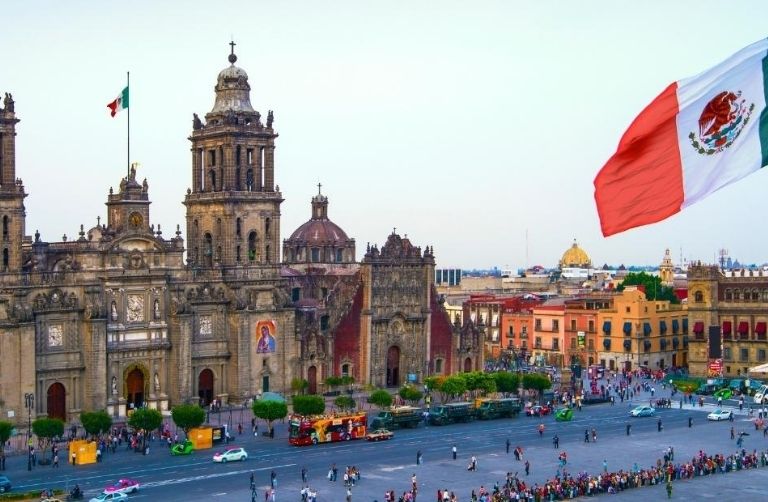

1 Comment
So happy to see Loreto get recognized as a primo wildlife spot. One of my happiest vacations was spent there, in spite of jellyfish stings on my arms! :)